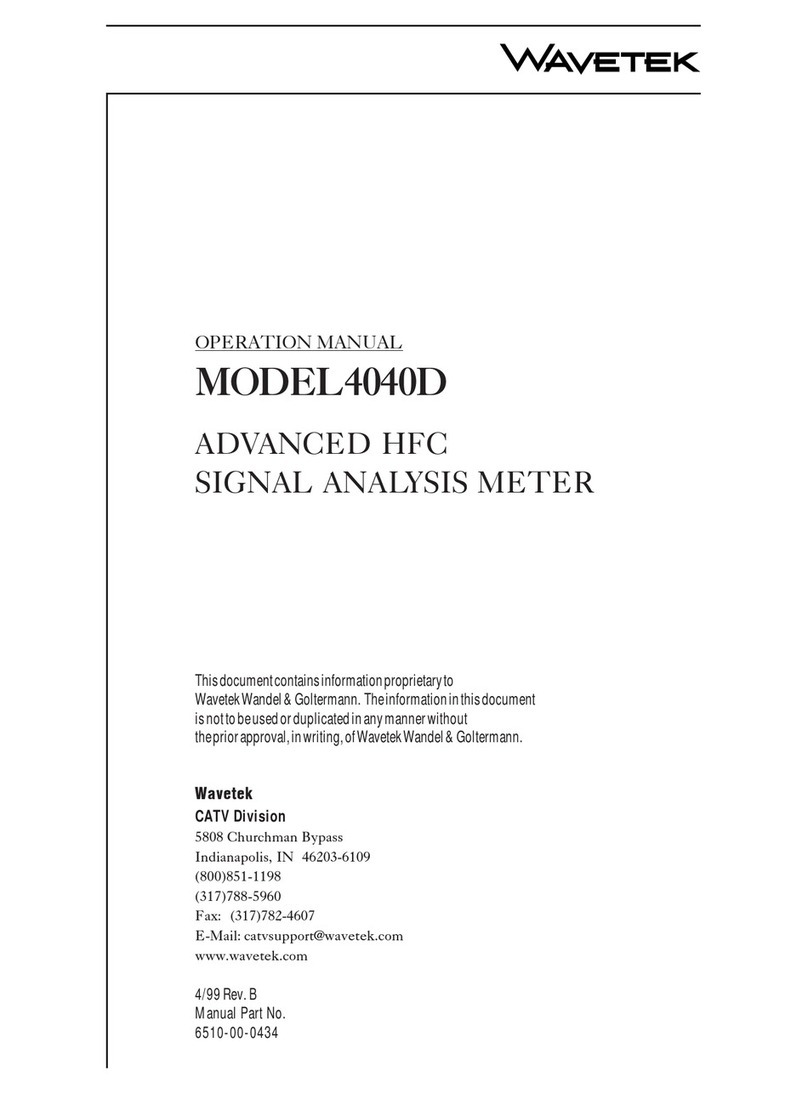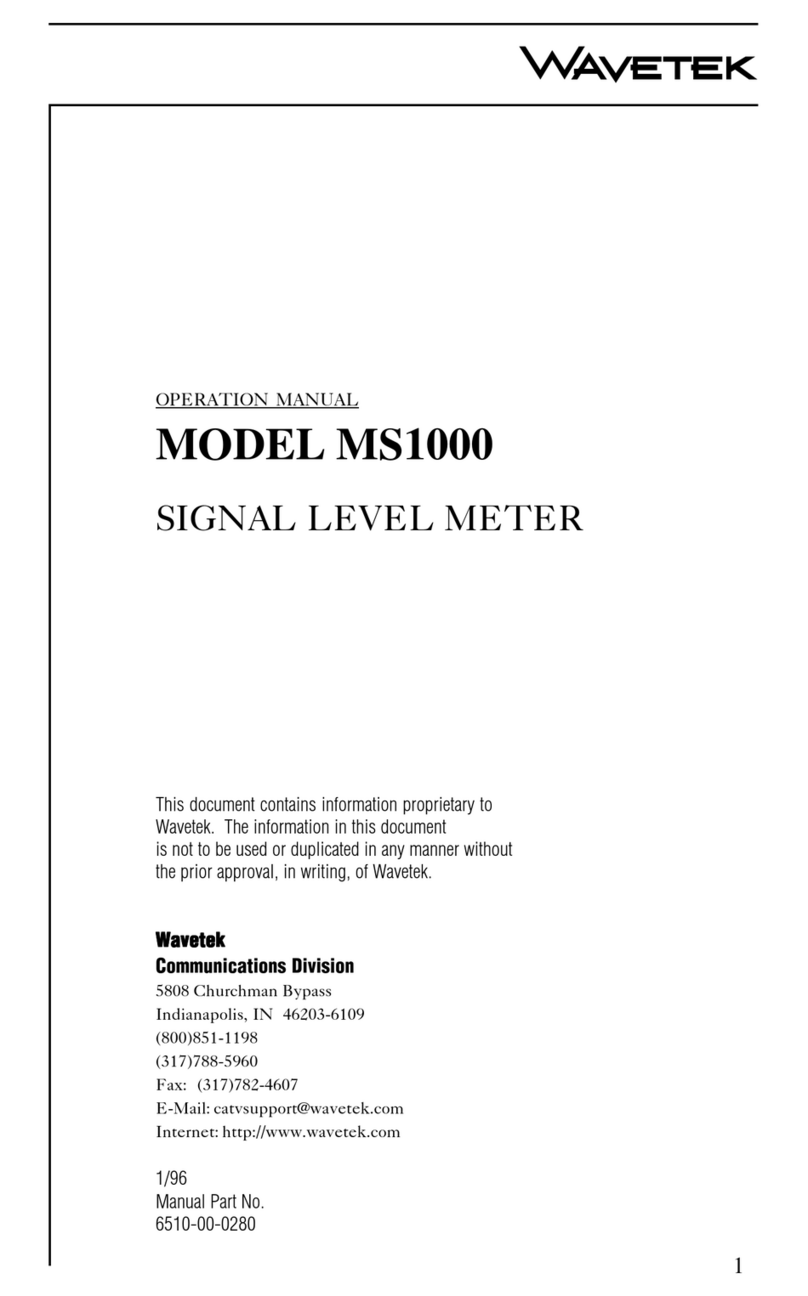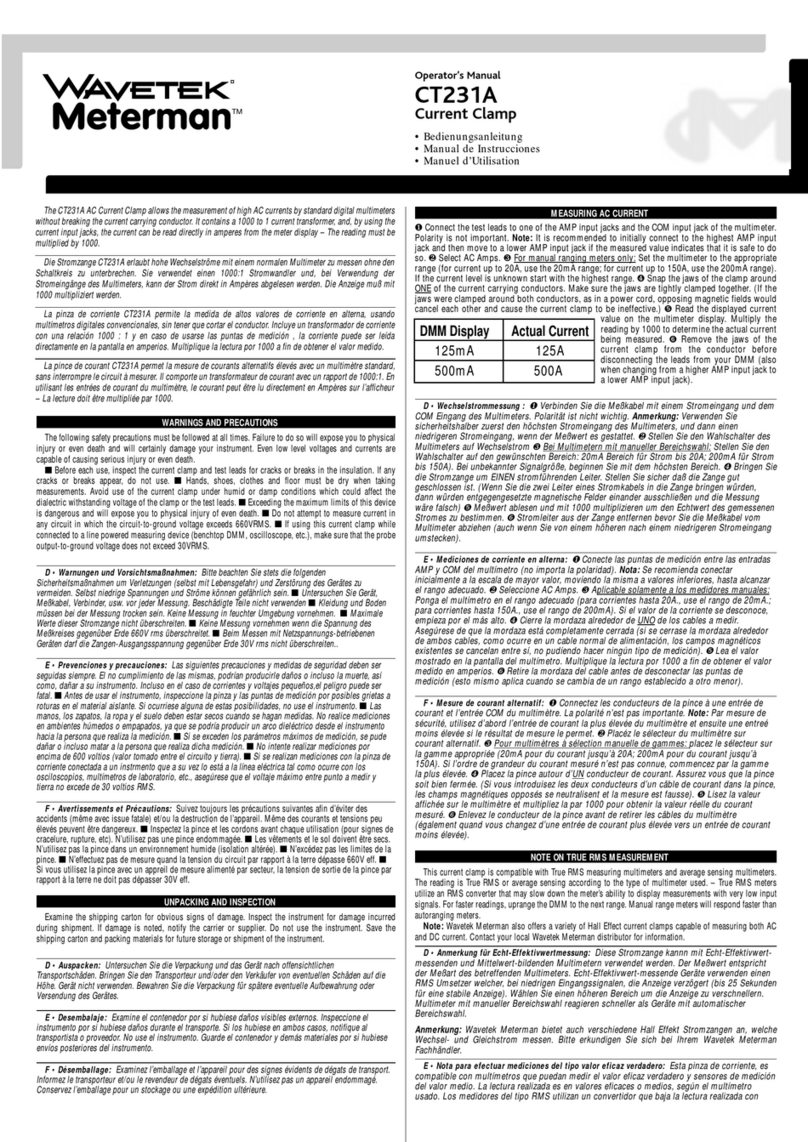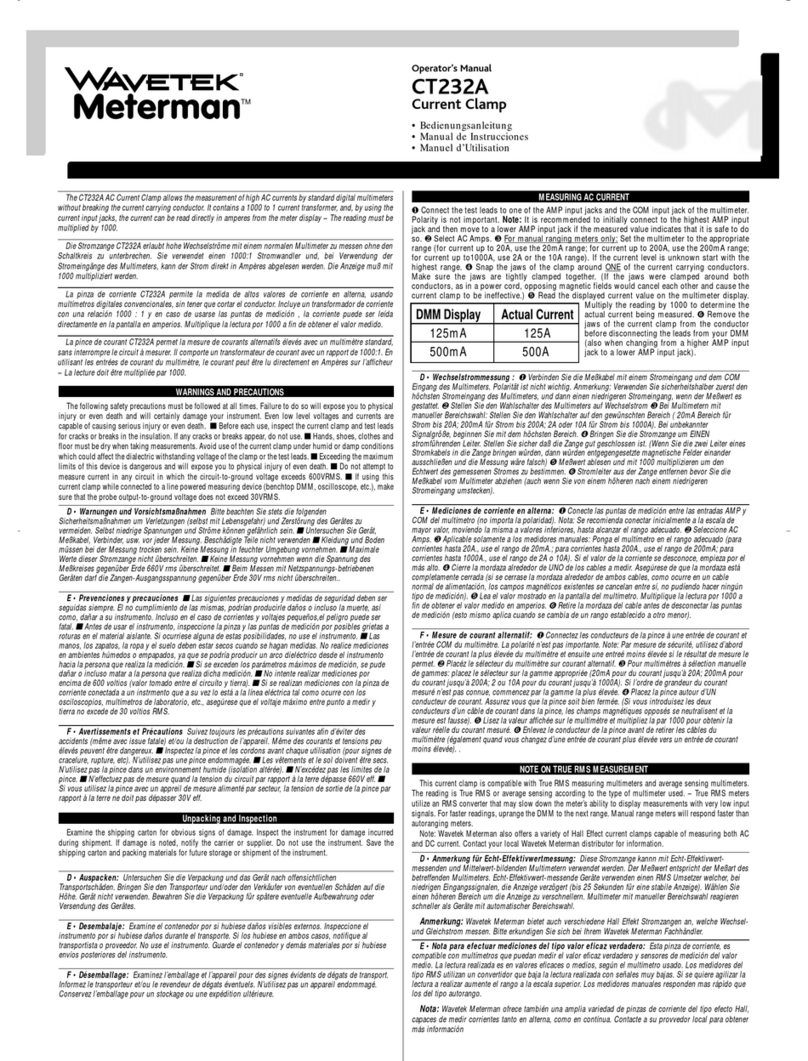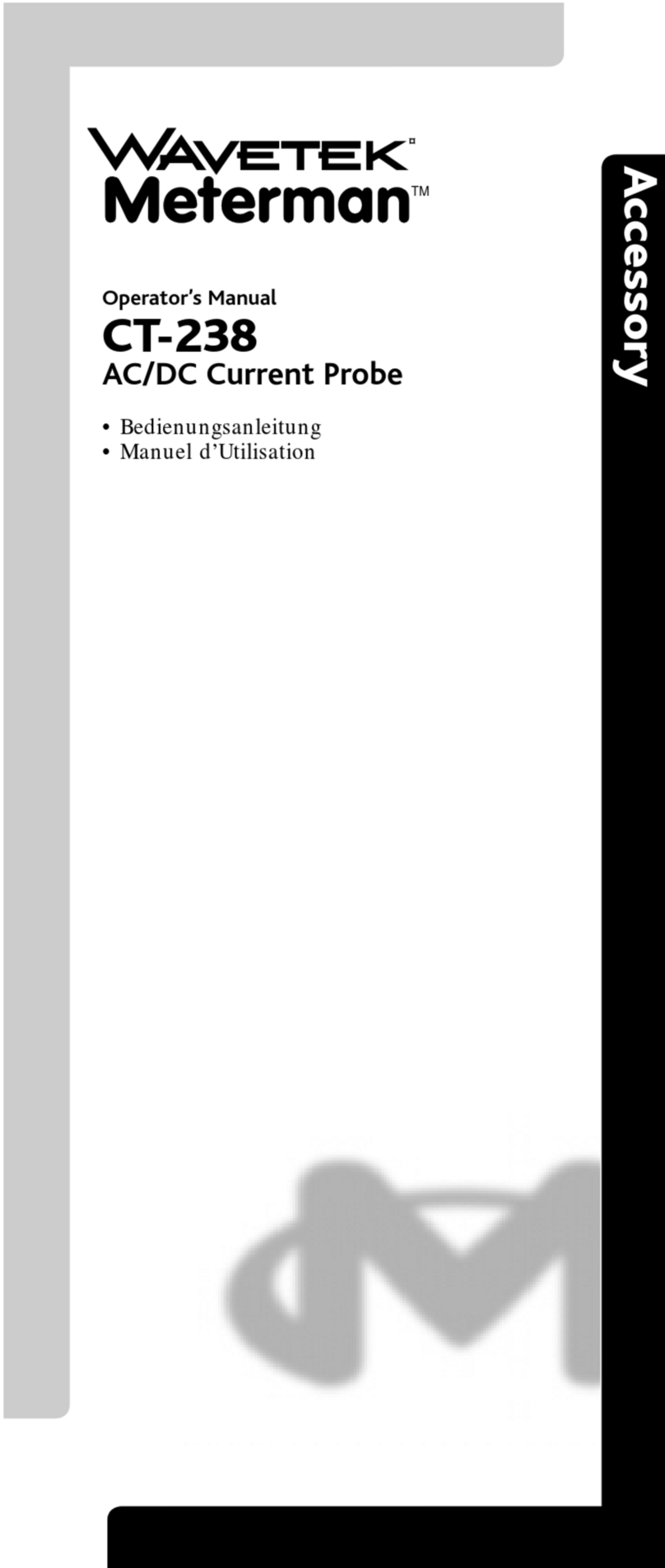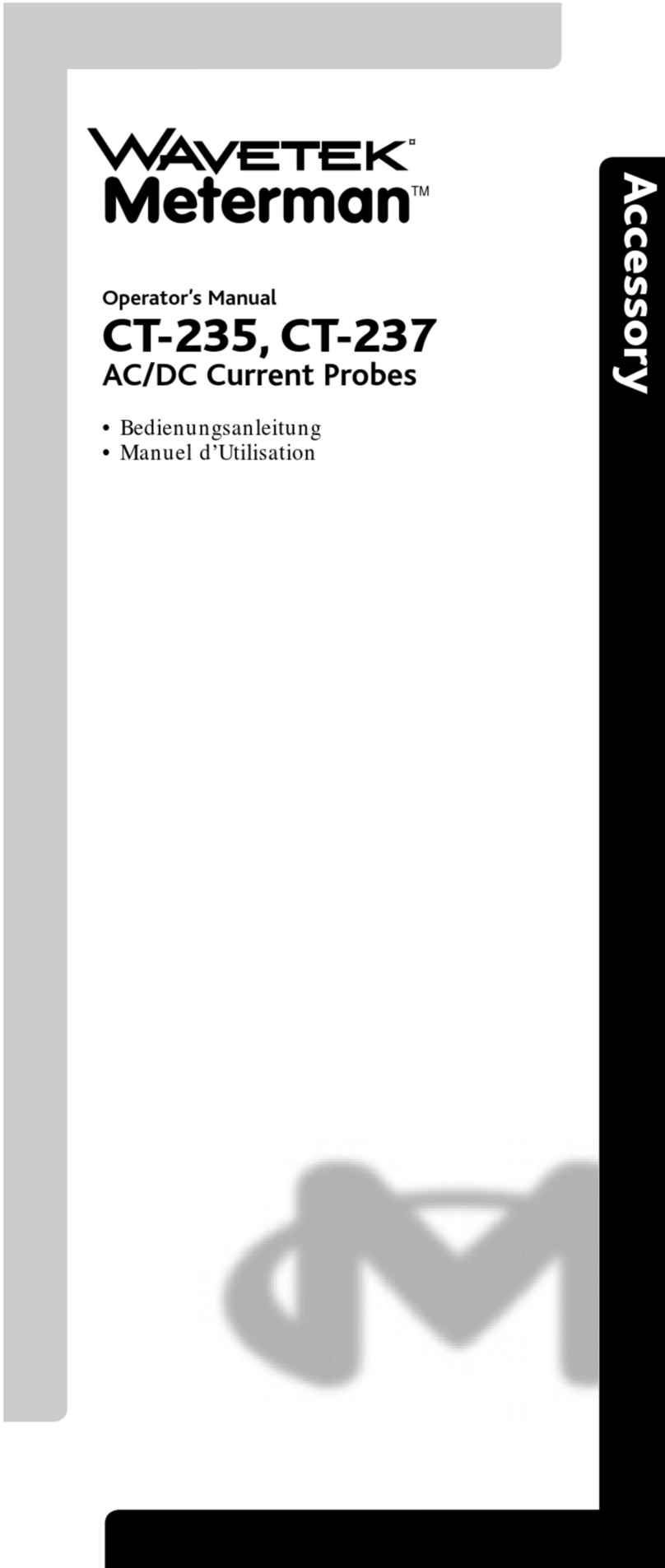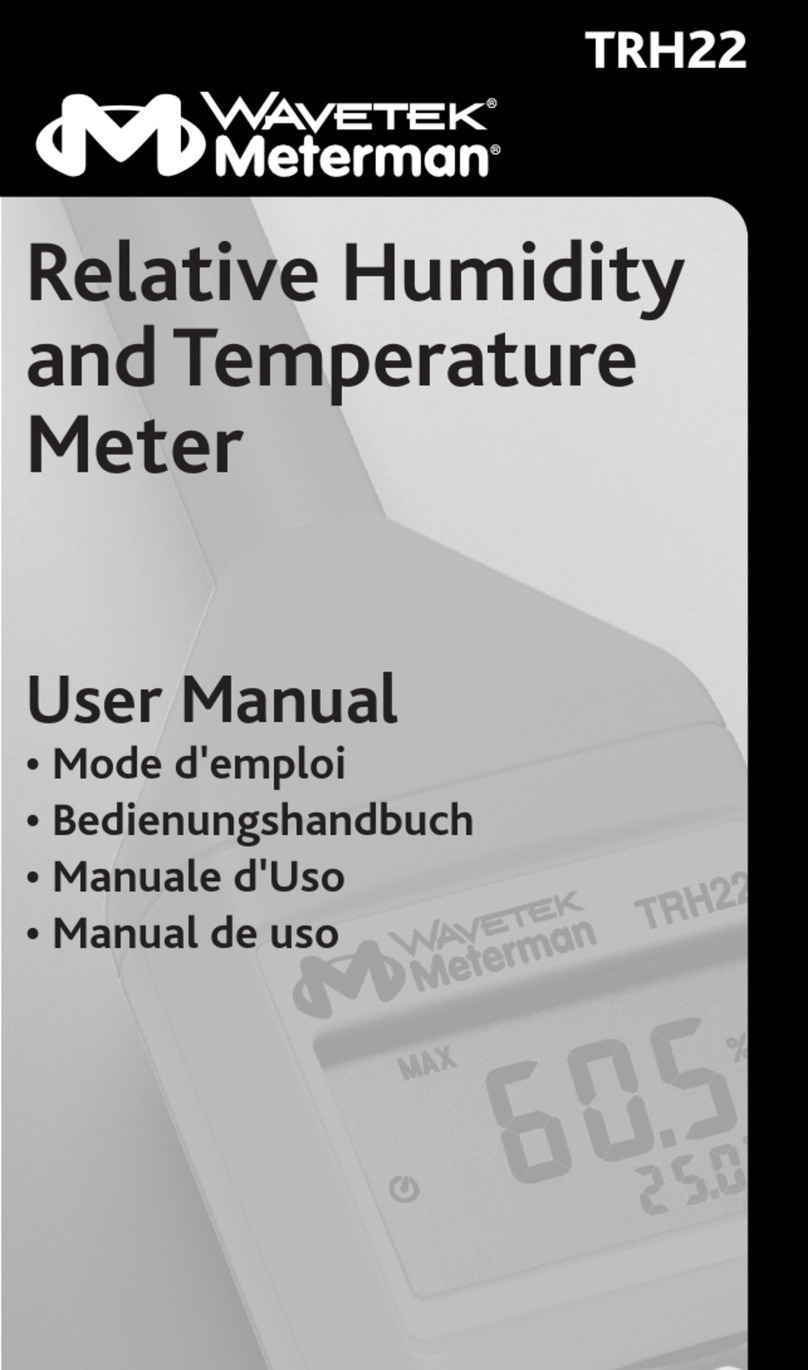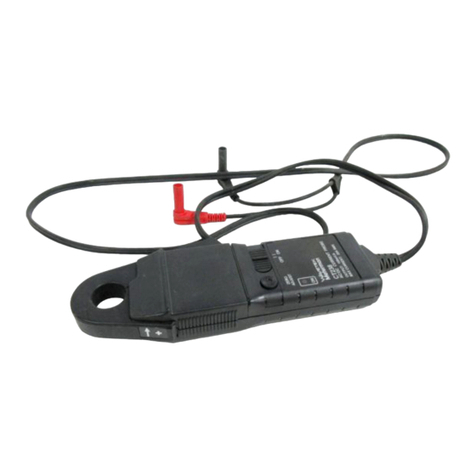
10.
Remove the old calibration label since its data will
no
longer
apply. Leave the old part
number
label
on
the detector.
11.
Check the detector in accordance with the
Detector
Performance
Evaluation Procedure shown
at
the
bottom
of
the next column.
12.
If facilities are available
for
evaluating
frequency
response characteristics, the new calibration data can be
marked on the new label, if supplied,
or
recorded
for
reference. If a new label
is
marked, it
should
be affixed to
the detector insulator to replace the old label. If no
facilities are available to check
frequency
response, the
detector can be returned to the factory for calibration.
FOR DETECTOR PIN'S 13785, 13786, 13787, 13838,
13840,
14139,
AND
15271
(MODEL
1045) USE
THE
FOLLOWING PROCEDURES:
1.
Using Figure 3 on page 3
of
this sheet
as
a guide,
remove the
two
#2-56 screws from the sides
of
the
insulator. Slide the insulator back.
2.
Unscrew
the cap assembly from the
detector
housing
assembly.
3.
Remove the detector element and, if included, the ring
from the
detector
housing assembly. (Older detectors
may have a capsule spacer and capacitive washer.
Remove these. They will be replaced by the ring included
in the kit. If
your
detector has just the ring, replace it with
the ring from the kit.)
4.
Late model detectors have
only
the detector element;
no
spacer, washer,
or
ring. If
your
detector
has
no
spacer,
washer,
or
ring, then discard the ring from the kit and
replace
just
the element
as
shown in Figure
3.
Make
sure
that the
components
are
correctly
seated and pressed
firmly
into the detector.
WARNING: Use care when pressing the
detector
element into the
housing
to avoid damaging the
female socket contacts.
5.
Using
Figure 4 on page 4
of
this sheet
as
a guide,
unscrew the
coupling
nut
from the cap. Remove the
#2
screw from the thermistor
mount
so that it
is
free to revolve
in the cap.
6.
Holding
the cap securely, use the spanner
wrench
(P/N
14238) provided in the kit to unscrew the
audio
connector. Make sure that the
thermistor
mount
also
revolves in the cap in the same
direction
as
the
audio
connector.
7.
Check
the value
of
the existing resistor against the
val
ue
of
the resistor included
in
the kit. Ifthey are the same
value, leave in the existing resistor.
8.
Ifthe resistor
val
ues are different, unsolderthe existing
resistor and replace
it
with
the new resistor from the kit.
Solder the resistor across pins 1 and
5.
The
red wire must
be re-soldered back into
connector
pin
1.
9.
Screw
the
audio
connector
back into the cap, alloWing
the
thermistor
mount
to revolve in the same
direction
as
the connector.
10.
Using the
#2
screw, secure the
thermistor
mount
to
the cap. Then screw the
coupling
nut
back
onto
the cap.
11.
Replace the
coupling
nut/cap
assembly onto the
detector housing and tighten it to 30
inch-pounds
(4.4 N-M).
12.
Replacethe insulator and secure it
with
the two #2-56
screws.
13.
Remove the old calibration label since its data will
no
longer
apply. Leave the old
part
number
label on
the detector.
14.
Check
the
detector
in
accordance
with the
Detector
Performance Evaluation Procedure given below.
15.
If
facilities are available
for
evaluating frequency
response characteristics, the new calibration data can be
marked on the new label,
if
supplied,
or
recorded
for
reference. If a new label is marked, it should be affixed to
the
detector
insulator to replace the old label. If no
facilities are available to check frequency response, the
detector can be returned to the factory for calibration.
DETECTOR PERFORMANCE EVALUATION
PROCEDURE
This
test will check the
detector
for
proper
linearity and
VSWR characteristics.
Standard procedurescan be used to check return
loss.
The
measurement
of
return loss
up
to
a frequency
of
34GHz
requires considerable care if measurement errors are to
be avoided. It
is
highly
recommended that aslotted line be
used,
or
to use couplers
or
bridges with open/short
calibration and
an
air line
during
the measurement
procedure.
To
check
linearity, the
power
meter
or
analyzer
compatible
with the
detectors
must be
within
proper
calibration.
To
supply power tothe detector, asourcewith
a
power
output
between 0 and 16dBm must be used. This
is
usually a30 to 50MHz
sourceof40mW.
Thesource must
have harmonics
down
at least 50dB, and a well matched
step attenuator (10dB steps, return loss greater than
20dB, and a 70dB range). Due to the tightness
of
the
linearity
specification
for
the detectors, the coaxial
attenuator must have a correction chart with it allowing
the attenuation to be
known
within 0.03dB down to
-40dBm, and within
0.1
dB below -40dBm.
Connect
the attenuator between the detector and the
source. Starting with 0 attenuation, step the attenuator
in
10dB steps. If detectors
forthe
1038-HIVSystem are being
checked, measurement
accuracy
should be
0.1
dB/10dB
plus 0.5dB
at
-50dBm. If detectors
for
the Model
1045
or
Model 1034A are being checked, use the linearity curves
of
either Figure 5
or
Figure 6 on page 4
of
this sheet for
comparison.
2
From the library of WØMTU
